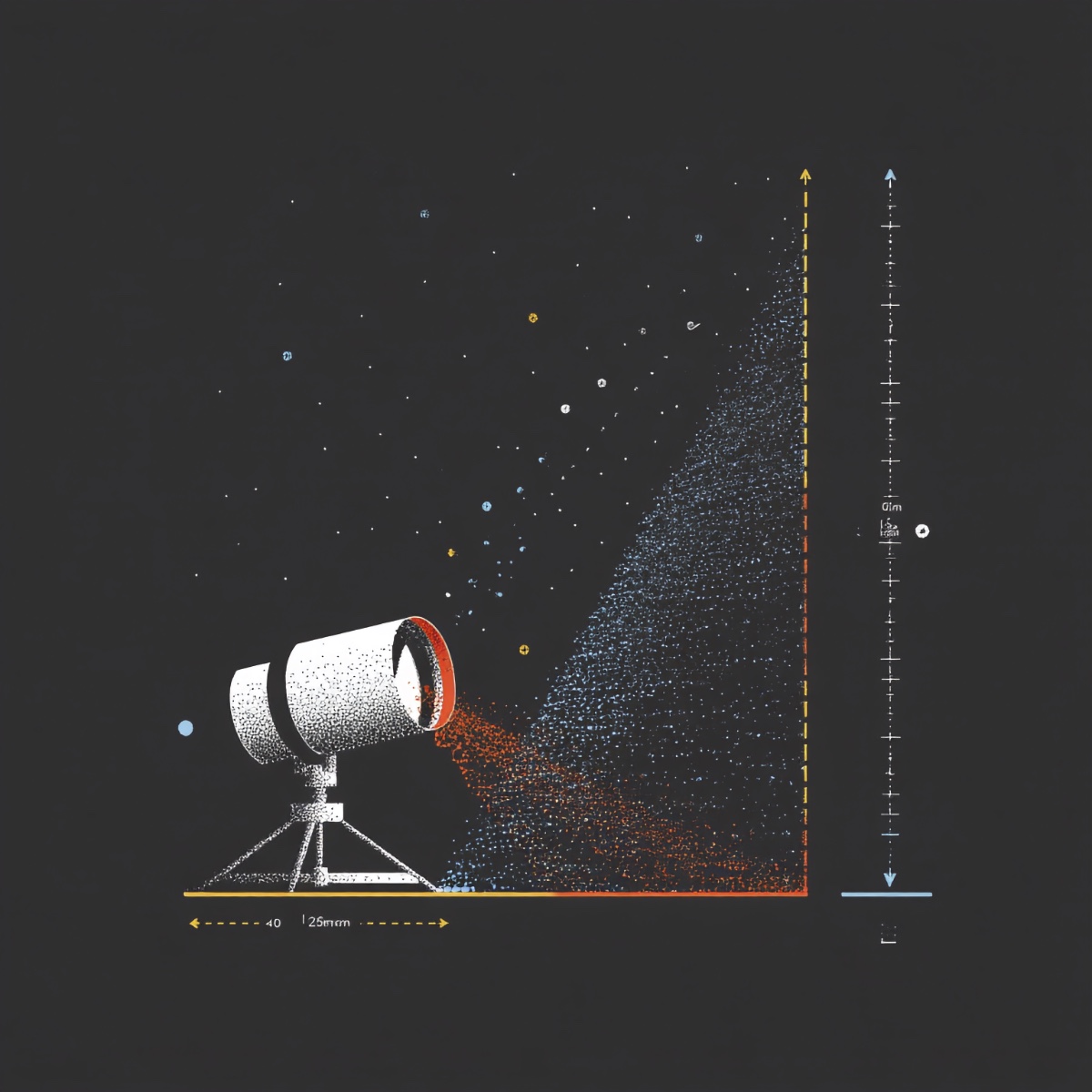Pixel Scale Calculator
Resolution Analysis
Calculate the pixel scale of your astrophotography setup to optimize image resolution and quality. This essential tool helps determine how much sky detail each pixel captures and whether your setup matches seeing conditions.
How to Use the Pixel Scale Calculator
- Enter your telescope or lens focal length.
- Enter your camera's pixel size or select a preset.
- Adjust binning if applicable.
- See pixel scale and resolution analysis results.
Pixel Scale Guidelines
| Application | Recommended Pixel Scale | Notes |
|---|---|---|
| Wide Field (Milky Way) | 3-6 arcsec/pixel | Good balance of detail and coverage |
| Deep Sky (General) | 1-3 arcsec/pixel | Standard for most deep-sky objects |
| Small Objects/Planets | 0.3-1 arcsec/pixel | High resolution for small targets |
| Excellent Seeing (<1") | 0.3-0.7 arcsec/pixel | Take advantage of good conditions |
| Average Seeing (2-3") | 1-2 arcsec/pixel | Optimal for typical conditions |
| Poor Seeing (>3") | 2-4 arcsec/pixel | Avoid oversampling in poor seeing |
Understanding Pixel Scale
The Formula
Pixel scale is calculated using: Pixel Scale = 206.265 × pixel_size / focal_length
Where pixel size is in micrometers, focal length is in millimeters, and the result is in arcseconds per pixel.
Key Concepts
- Sampling: Proper sampling requires 2-3 pixels across the smallest detail you want to resolve
- Seeing Limited: Pixel scale should match atmospheric seeing conditions
- Oversampling: Too small pixel scale wastes disk space and processing time
- Undersampling: Too large pixel scale loses fine detail permanently
Practical Applications
- Equipment Selection: Choose cameras and focal lengths for optimal pixel scale
- Binning Decisions: Use binning to adjust pixel scale for conditions
- Site Evaluation: Match pixel scale to your typical seeing conditions
- Target Planning: Ensure adequate resolution for your intended subjects

FAQ
-
What is pixel scale in astrophotography?
Pixel scale measures how much sky each camera pixel covers, expressed in arcseconds per pixel. It determines the resolution and detail level of your images.
-
What's a good pixel scale for astrophotography?
Generally, 1-2 arcsec/pixel provides a good balance. Smaller values give higher resolution but may be limited by seeing conditions, while larger values reduce detail but improve signal-to-noise.
-
How does pixel scale relate to telescope resolution?
Pixel scale should ideally be 2-3 times smaller than your telescope's resolution limit to properly sample the image without losing detail (Nyquist sampling).
-
Why is pixel scale important?
Pixel scale determines how much detail you can capture, affects file sizes, and helps plan whether your setup matches seeing conditions and target requirements.